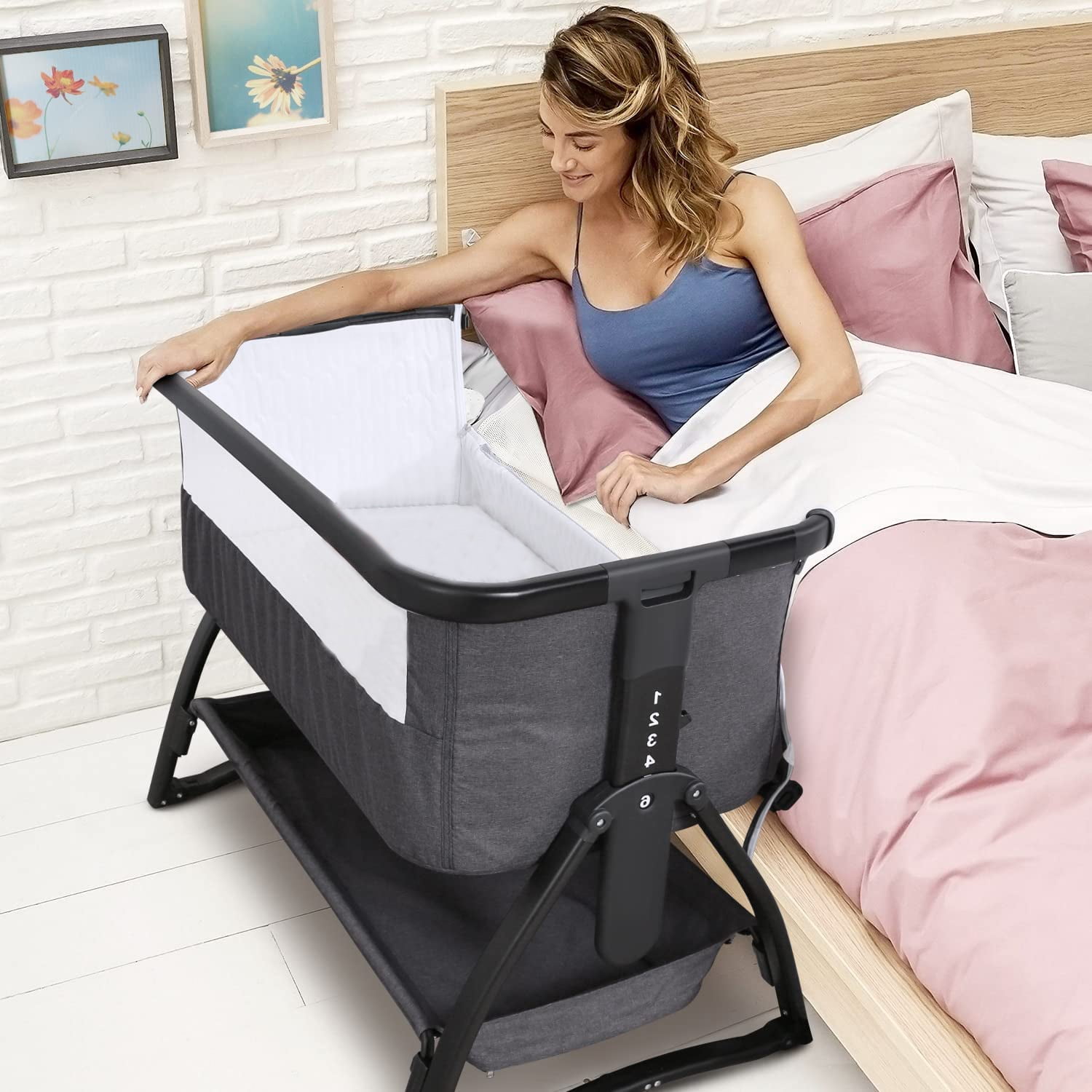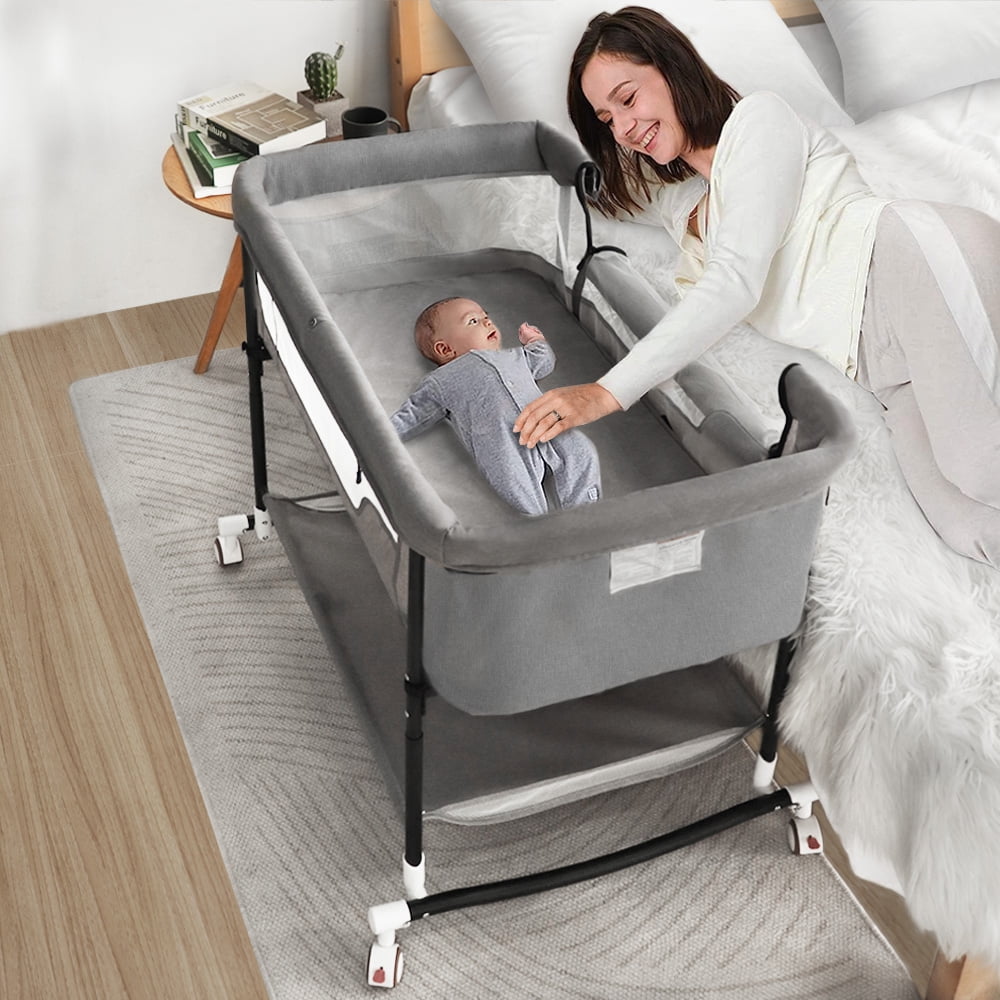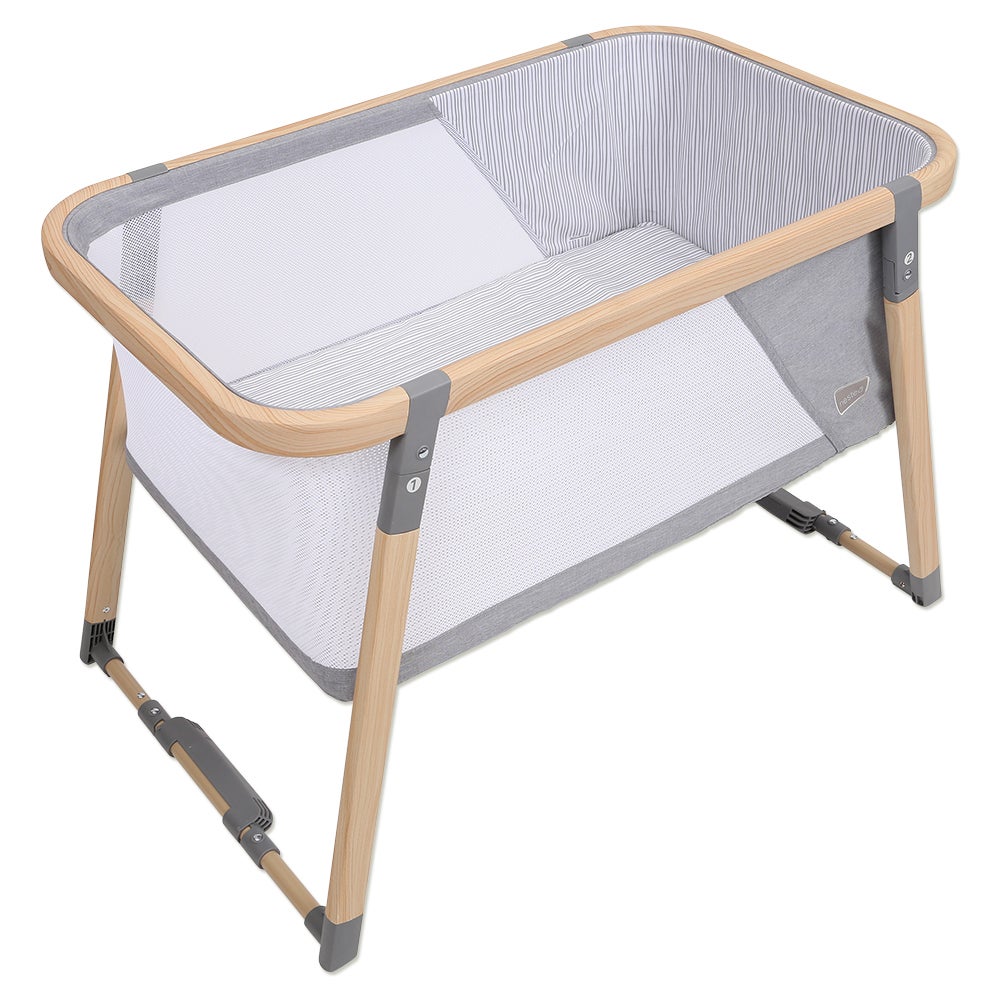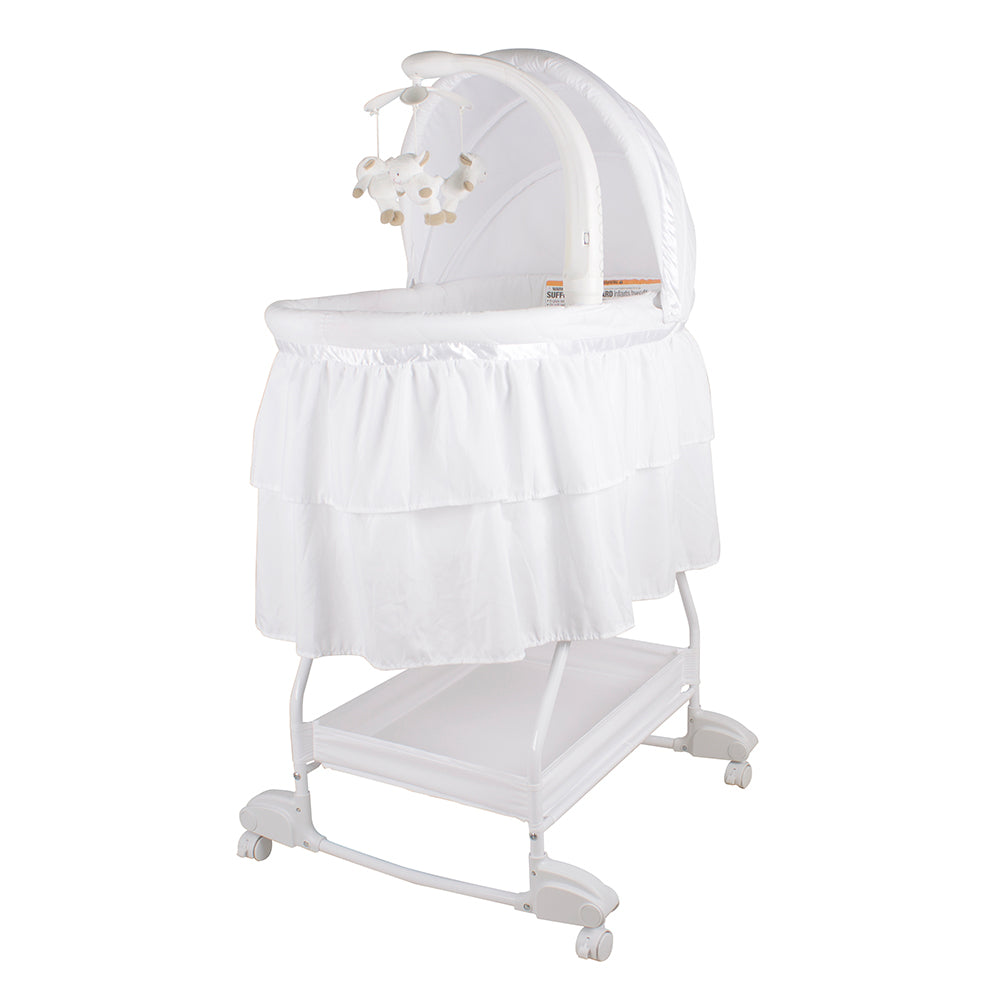Introduction: The Cradle’s Calm Embrace
The first months of a baby’s life are marked by a delicate balance between growth and development, sleep, and the need for constant care. A bassinet, with its cozy confines and proximity to parents, often becomes the primary sleeping arrangement during this period. However, amidst the peaceful slumbers and the convenience it offers, arises a crucial question for new parents: how long is it safe for a baby to sleep in a bassinet? This article delves into understanding the ideal duration, safety considerations, and the transition process from bassinet to crib, ensuring your little one’s slumber remains as safe and comfortable as possible.

Section 1: The Bassinet’s Role in Early Infancy
Nurturing the Newborn
Bassinets serve as a haven for newborns, providing a secure and snug environment that mimics the womb’s coziness. Their compact size allows them to be placed beside the parent’s bed, facilitating easy access for night-time feeds and checks, which is especially beneficial for breastfeeding mothers and bonding. The first few months of life see rapid physical and neurological development, making the bassinet’s role in promoting restful sleep all the more crucial.
Safety First: Age and Weight Considerations
Manufacturers typically recommend using a bassinet until the baby reaches a weight limit, usually around 15-20 pounds, or until they start showing signs of rolling over or pushing up on their hands and knees. This milestone typically occurs around 3-4 months but can vary. Exceeding the weight limit or using the bassinet once the baby can move more actively increases the risk of falls or entrapment, necessitating a timely transition to a larger, safer sleeping space.

Section 2: Recognizing the Signs for Transition
Growth Spurts and Developmental Milestones
As babies grow, they become more active, reaching developmental milestones such as rolling over, which signals a readiness to move to a larger, more secure space. These movements increase the risk of the baby getting stuck or toppling the bassinet, making a crib transition a safety priority. Additionally, when the baby starts outgrowing the bassinet physically, with limbs hanging over the edges, it’s a clear indication that a change is due.
Sleep Patterns and Comfort
Changes in sleep patterns can also indicate a need for transition. As infants mature, they require longer stretches of uninterrupted sleep. A larger crib provides ample room for them to move and adjust positions without waking up, promoting better sleep quality. Furthermore, the increased space supports the use of sleep aids like sleep sacks, which help maintain a safe sleep environment as the baby grows.

Section 3: Ensuring a Smooth Transition
Preparing the Crib
Before initiating the transition, ensure the crib meets current safety standards, with a firm, tight-fitting mattress and no loose bedding, bumpers, or toys that could pose suffocation risks. Opt for breathable crib sheets and consider using a sleep sack to keep the baby warm without the need for blankets.
Gradual Introduction
To ease the baby into the new sleeping environment, begin by placing them in the crib for naps initially. This gradual introduction helps them acclimate to the new space during daylight hours when they’re naturally more alert. Gradually extend the crib usage to overnight sleep, maintaining consistent bedtime routines to reassure and comfort the baby.
Maintaining Familiarity
Retain elements of the baby’s bedtime routine, such as lullabies or white noise machines, to provide a sense of familiarity and security in the new sleeping environment. Placing a worn shirt or blanket with the parent’s scent in the crib can also help soothe the baby during the transition.

Section 4: Safety Beyond the Bassinet
Ongoing Sleep Safety
Even after transitioning to a crib, continue to follow safe sleep guidelines, including positioning the baby on their back to sleep, avoiding soft bedding and toys in the crib, and maintaining a smoke-free environment. Regularly check the crib for any loose parts or hazards as the baby becomes more mobile.
Monitoring and Adaptation
Keep an eye on the baby’s sleep habits and adjust the sleep environment as needed. As they grow, consider transitioning to a toddler bed around the age of 2 or 3, once they start attempting to climb out of the crib. Always prioritize safety while fostering independence and healthy sleep habits.
Section 5: Addressing Common Parental Concerns
Transition Anxiety: Both for Parents and Baby It’s natural for parents to feel a tinge of sadness or anxiety when moving their baby from the bassinet to the crib, marking the end of a precious phase. Similarly, babies may initially resist the change due to the unfamiliar surroundings. Acknowledge these emotions and remember that this transition is a positive step towards your child’s growth and safety. Consistency, patience, and reassurance are key to soothing both parental and infant anxieties.
Sudden Changes in Sleep Habits During and after the transition, it’s not uncommon for babies to experience disruptions in their sleep patterns. They might wake up more frequently or have difficulty settling down. This is often temporary and can be attributed to the new environment. Stick to established bedtime routines and offer extra comfort measures if needed. Over time, most babies will adjust and resume their regular sleep schedules.
Room Sharing versus Solo Sleeping AAP (American Academy of Pediatrics) recommends room-sharing without bed-sharing for at least the first six months and ideally up to one year to reduce the risk of SIDS (Sudden Infant Death Syndrome). When transitioning to a crib, you might choose to keep the crib in your room initially to maintain proximity and continue to monitor your baby’s sleep. As your child grows and sleep habits stabilize, gradually moving the crib to their own room can be considered, always keeping safety at the forefront.

Conclusion: A Safe Haven for Every Stage
The bassinet’s charm lies in its ability to provide a comforting start to a baby’s life outside the womb. However, recognizing the right time to transition to a crib is essential for continued safety and development. By staying vigilant about developmental milestones, preparing the crib environment meticulously, and gradually introducing the change, parents can ensure their little one’s slumber remains a safe and nurturing experience throughout each growth stage. Remember, every baby’s journey is unique; adapt and respond to your child’s needs, and cherish each phase of their growth, from the cradle’s calm embrace to the adventures of the bigger bed.
